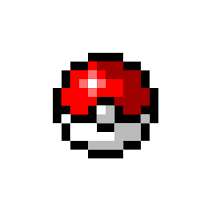"Regional Pokemon Distribution: An early look at the possibilities of S2 Cell, Latitudinal and Longitudinal and ‘drawn area’ based ranges."

#PokemonGO: The ranges of regional Pokémon remain a matter of contention that has been muddied by many false claims of various forms. The following discussion is based on first-hand information and what I believe to be reliable sources as I have been able to obtain. I strongly encourage travellers who have had differing experiences to bring them to everyone’s attention with as much evidence as possible.TLDRIt is impossible to display Kangaskhan’s range as a rectangle between 4 latitudinal and longitudinal points.The regional block on South Korea appears to be controlled by level 6 S2 cells. Recent spawn changes have made spawn points appear in areas that North Korea shares with South Koreas unblocked Sokcho s2 cell.If S2 cells have anything to do with regional distribution, then they are controlled by at least level 9 sized cells in the case of Tauros.This is a follow up to my post a day or so ago and assumes the reader has basic understanding of what an S2 cell is.There is no way that the distribution of Kangaskhan can be defined to the bounds of a single rectangleI have seen some trainers suggest, often when discussing the United States regional Tauros, that it is likely that with the regional are distributed using big rectangles drawn on the map.While things would be nice and simple if that was the case, I have found multiple sources of evidence that Kangaskhan spawns as far north as Jayapura on the North Coast of New Guinea. As such, this map shows both what I consider the proven and also the potential range (that is to say areas that lack evidence either way) of Kangaskhan.Because Kangaskhan does not spawn in the central islands of the Indonesian archipelago, it would be impossible to simply draw a rectangle along latitudinal and longitudinal lines over its region to predict where it will and won’t spawnPokemon are spawning in North KoreaMany trainers may be aware that much of South Korea remains region blocked for Pokémon Go.There exists one area that is an exception however, the Far North East corner of the country, around the towns of Sokcho is now famed as a South Korean Pokémon Go destination, and many users report encountering Farfetch’d there.It is likely this falls the way it does as the result of S2 cells being used as boundaries (external link, The Verge) that provided the scoring regions in Ingress.This would mean that at S2 cells at least as small as level 6 were used to region block South Korea (a rendered map of level 6 S2 cell over Sokcho). Upon reviewing the locations this S2 cell covered, I noted that it crossed the border into North Korea, further still, I noted that it covered an area in North Korea ~17kms from the border marked as a golf course with red dotted paths on a particular map service that shall not be named because it clearly has nothing to do with Pokémon Go due to the fact that it’s not referenced in the app even though there does seem to be a lot of odd coincidences with the occurrence of biomes, pretty much every nest and where new spawns have appeared (map link)..If the cell size was a level smaller, Pokémon would not appear over the border. There was only one thing I could do, smuggle myself into North Ko…I sent the location to a friend who, before I could even ask, replied with a screenshot stating that they had indeed found Pokémon spawning at the North Korean golf course that shares the same level 6 S2 cell as Sokcho, South Korea. If anyone else could confirm this, it would be very helpful.South-most Tauros DistributionI had thought with the previous two sets of analysis, that regional distribution was controlled by level 6 scale cells, just like regional scoring in Ingress. It is not until at cells as small as [level 9 were rendered]( 24.543435, -82.954194) that it became reasonably possible to separate areas that spawn Tauros from areas that have been reported not to. This is one cell size away from the caught location cell data used on captured pokemon’s profiles, four level 10 cells fit into one level 9 cell.Conclusions and RecommendationsUS and Eastern European based trainers are best placed to research the actual boundaries of regional pokemon, but there is nothing to say that each regional pokemon doesn’t have its own quirks in distribution. This research asks more questions than it gives answers at this stage.Florida, Texas, Canada or Mexico based trainers may find merit in researching the precise boundaries of Tauros – this would be a most worthwhile project.Further, my own research into Kangaskhan would benefit greatly from more Indonesian colleagues who have frequent access to the Eastern islands of their beautiful country.It is the author’s opinion that regional distribution occurs either via manually controlled smaller S2 cells, or alternatively, drawn map lines in much the same way one would draw the boundaries of a park or lake.The author would also like an update soon so that he doesn’t just sit around tinkering when he could be out catching Pokémon. via /r/TheSilphRoad http://ift.tt/2jIPafU
"Regional Pokemon Distribution: An early look at the possibilities of S2 Cell, Latitudinal and Longitudinal and ‘drawn area’ based ranges."
!["Regional Pokemon Distribution: An early look at the possibilities of S2 Cell, Latitudinal and Longitudinal and ‘drawn area’ based ranges."]() Reviewed by The Pokémonger
on
21:58
Rating:
Reviewed by The Pokémonger
on
21:58
Rating:


No comments